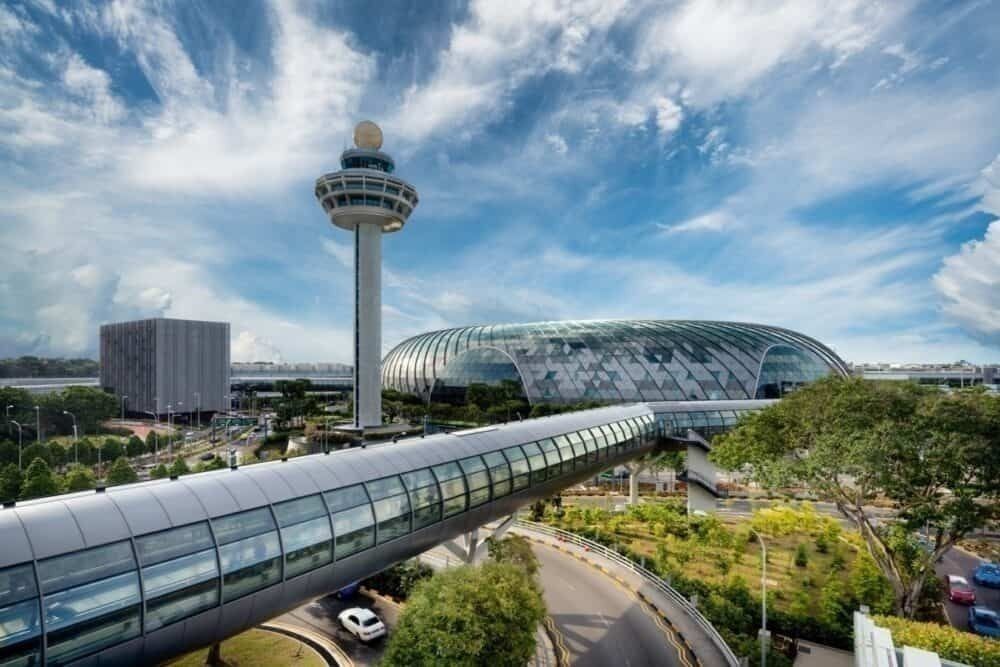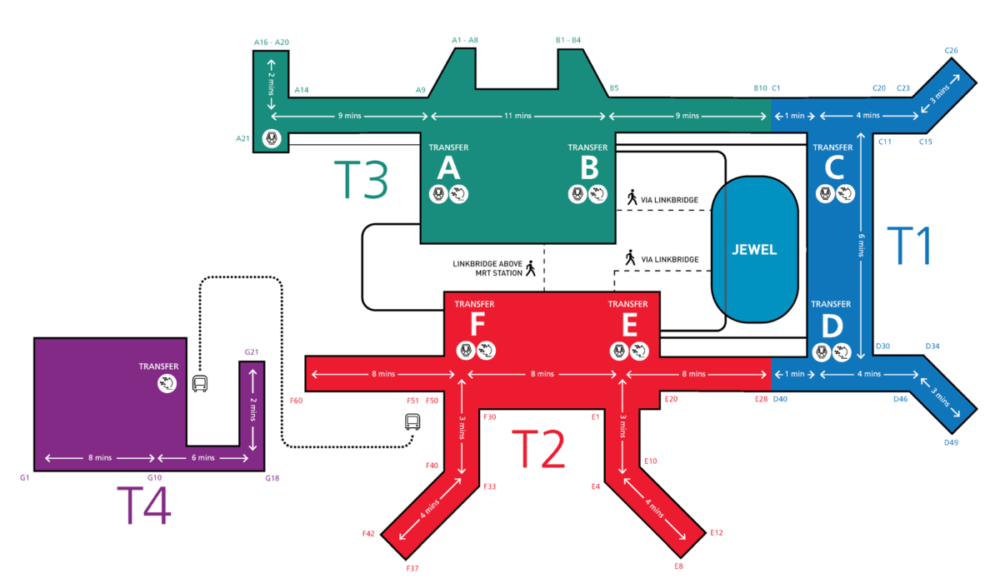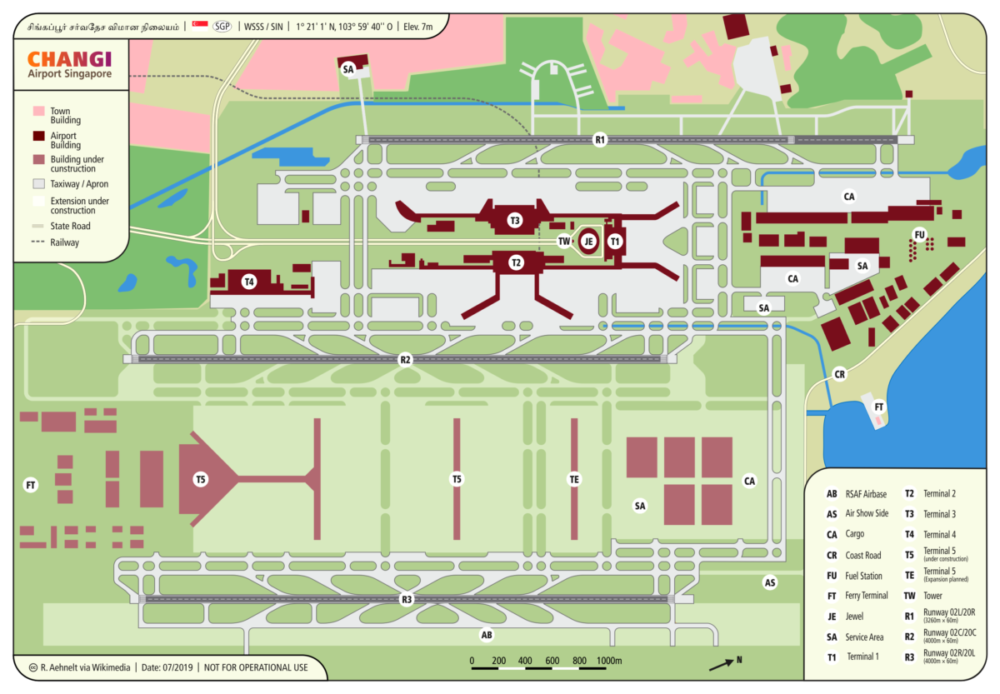Is It Easy to Navigate the Singapore Airport
Singapore's Changi Airport is not only a destination in itself but also a major hub within Southeast Asia, connecting it to hundreds of other localities across the globe. Passengers traveling through the airport might be changing flights or even airlines, and the process of connecting flights can be rather complicated for the uninitiated.

What is the layout of Singapore Changi Airport?
Singapore's Changi Airport is split up into four terminals with a fifth under construction. As Singapore doesn't have any domestic flights, all four terminals are for international travel.

In the middle of all the terminals on the ground side is the Jewel Changi mall. The mall is fabulous in its own right (and could be its own article) and contains the world's largest indoor waterfall. It should be visited if you have over two hours to spare, but remember it requires you to clear Singapore customs.
How do you get to each terminal?
While the photo above makes the terminals look like that they are all within walking distance of one another, the reality is that these distances can be quite far.

Fortunately, the main three terminals connect via people-mover trains. These significantly speed up the process of getting to each terminal.
- In Terminal 3, transfer A links to transfer F in Terminal 2, and there is another line moving to the far left of the terminal.
- On the other side of Terminal 3, transfer B links to transfer E in Terminal 2.
- In Terminal 2, transfer E not only links back to transfer B but to transfer D in Terminal 1.
- On the opposite side of Terminal 1, transfer C links to Terminal 3's transfer B.
- There is also a shuttle bus from Terminal 2 to Terminal 4, which runs around the tarmac.
If you want to travel on the people-mover trains that travel through the Jewel garden and waterfall, you will need to travel on the link between transfer B to transfer E on the airside.
All of the terminals above, apart from terminal four, are connected via a footbridge or long corridors with travelators. Options are available on both the ground side and the airside, although not all people movers move airside.
How much time do you need to connect and transfer?
Traveling from each terminal to another can take a long time if you decide to walk.
- Walking can take up to 20 minutes from one end of a terminal to another, and then an additional 20 minutes for every terminal after that (if you want to walk the loop from T3 to T1, it can take up to an hour). There is no way to walk the airside to T4.
- The people mover trains take only a few minutes to move to the respective transfer area; however, you need to factor in waiting time for the next train. This can take up to 15 minutes if you just miss one.
If you are taking another flight and can't transfer bags, it can take up to an hour to disembark, pass through immigration, collect bags, and then recheck-in. You will need to ensure that you have enough time to complete the steps before the check-in desk closes. However, if you are traveling on flights with no bags (such as low-cost-carriers) and have already checked in, then 75 minutes is all you need.
Singapore's Changi Airport is full of so many delights (it is consistently rated one of the best airports in the world) that if you get the chance to spend a few hours there on a connection, you might never want to leave.
What do you think? Have you connected in Singapore before? Let us know in the comments.
Source: https://simpleflying.com/singapore-changi-airport-connection-time/